The New Certina DS Chronograph Automatic
A handsome yet accessible 1940s-inspired chronograph by Certina.
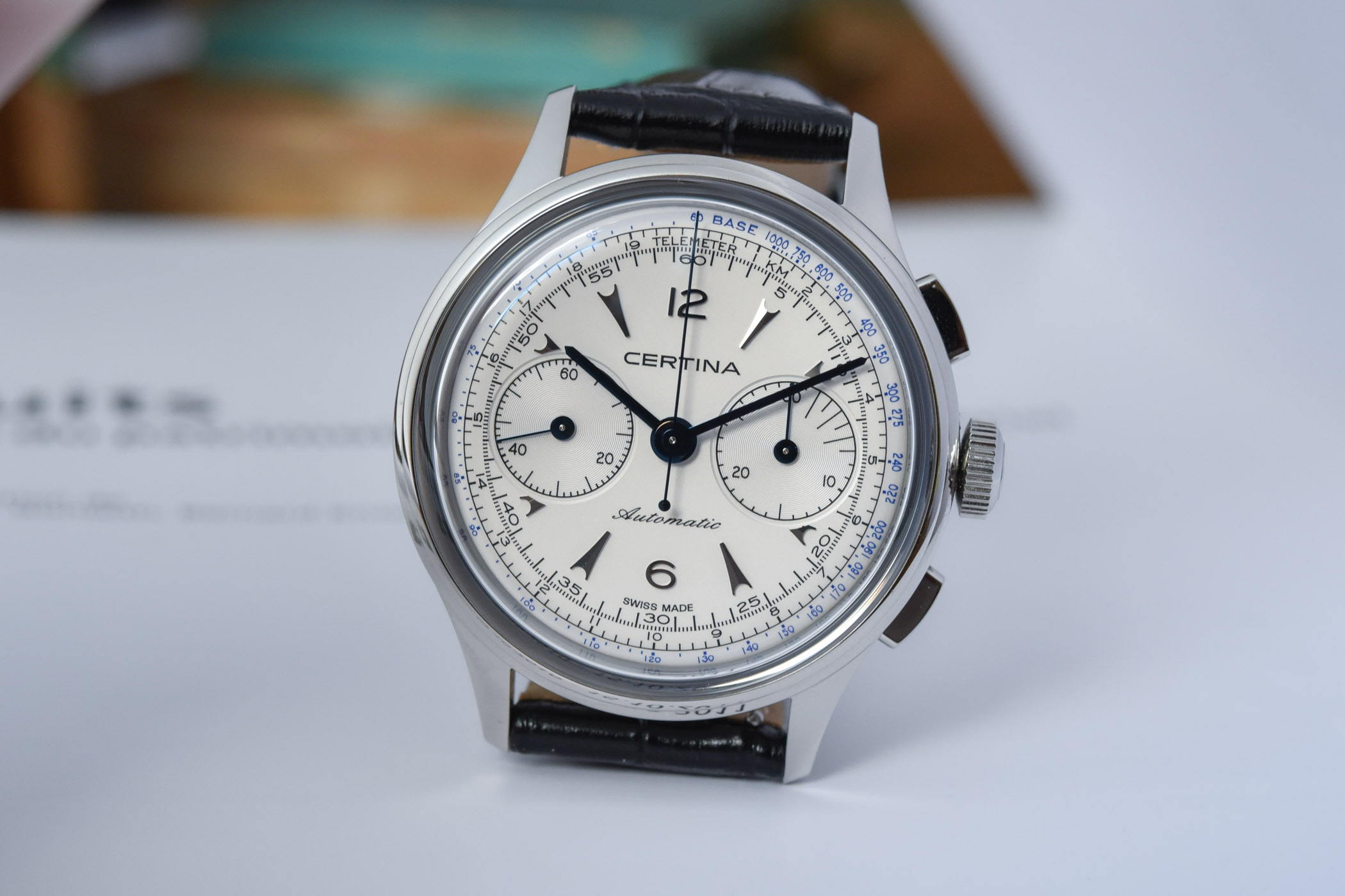
As the trend for vintage-inspired watches consolidates, brands continue to dig into their archives to find inspiration and breathe new life into past glories. Certina, mostly known for its accessible and robust watches, has also embraced the concept, for instance with the recent and attractive DS PH200M Blue. Just unveiled is the elegant Certina DS Chronograph Automatic, that as you would have guessed, is a modern and handsome re-edition of a Chronograph from the 1940s.
Certina was founded in 1888 in Grenchen and its century-old heritage constitutes an immense source of inspiration. Once again, the brand has drawn from its rich history to produce a remake of an elegant 1940s chronograph.
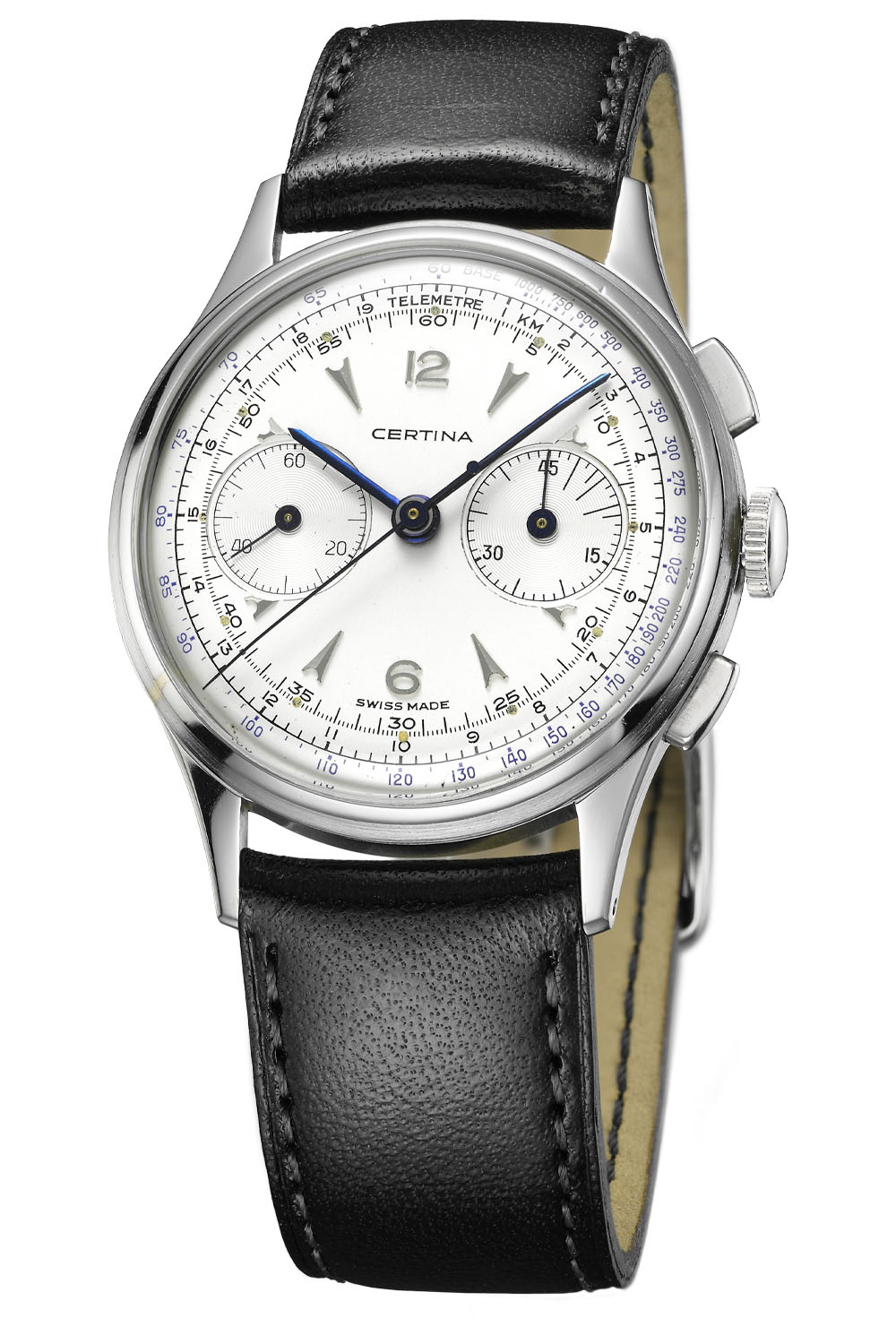
Although the DS Chronograph Automatic comes in a larger case (42mm versus 36mm for the original watch) and is equipped with modern features, the similarities with the historic watch are evident and it does make for a truly handsome watch. Fashioned out of 316L stainless steel, the case is nicely executed. It measures a respectable 42mm diameter and 13.9mm height, but its profile remains rather thin thanks to the curved caseback and box sapphire crystal.
Together with the ergonomic lugs, this makes for a watch that sits well on the wrist. The crown is large and easy to operate. It is flanked by old-school, rounded rectangular pushers. On the back, the Certina double C logo is framed by triangles inspired by the dial’s indexes. Last, the water-resistance is rated at 100m, comfortable considering the vintage inspiration of this model.
Protected under the box sapphire crystal, the Certina DS Chronograph Automatic displays a truly stylish dial, with a well-balanced bi-compax layout. Silver-coloured and with dynamic applied indexes, it is softly curved (so are the blued hands) which enhances the retro-style of the watch while producing a nice sense of depth. The registers are finely snailed.
Just like the original 1940s piece, the dial is framed by both a tachymeter scale (in blue) and a telemeter scale (in black). Less common than the tachymeter – which allows measuring average speed between two mile or kilometre markers – the telemeter enables you to determine your distance from a phenomenon that is both visible and audible, for instance, a lightning storm. It was also used by soldiers observing artillery. The dial is, altogether, pleasantly complex and faithful to the original watch in style and proportions.
The Certina DS Chronograph Automatic is powered by a modern self-winding movement, the calibre A05.H31. This automatic cam-and-lever chronograph is derived from the ETA 7753, a two-counter version of the tried-and-tested 7750 base. With a diameter of 30mm, it features a 30-minute counter at 3 o’clock and small seconds at 9 o’clock. Its balance wheel incorporates an anti-magnetic silicon hairspring and beats at 28,800 vibrations per hour. Compared to a classic Valjoux, the power reserve has been boosted to 60 hours.
Good looks & excellent value
All in all, this Certina DS Chronograph Automatic is a really great looking vintage-inspired chronograph for a minimal cost (below EUR 2K). If you are looking for a classically styled chronograph at an affordable price, this would definitively be a watch to consider. Admittedly, it is on the large side for a traditional chronograph, but it sits well under your cuff. And with its convex, silver-coloured dial, it really looks the part!
Price
The Certina DS Chronograph automatic is worn on a leather strap fitted with a quick-release system. A butterfly clasp with double safety push-button secures the watch on the wrist. Price is set at EUR 1,920 or CHF 1,890.
For more information, please visit certina.com.


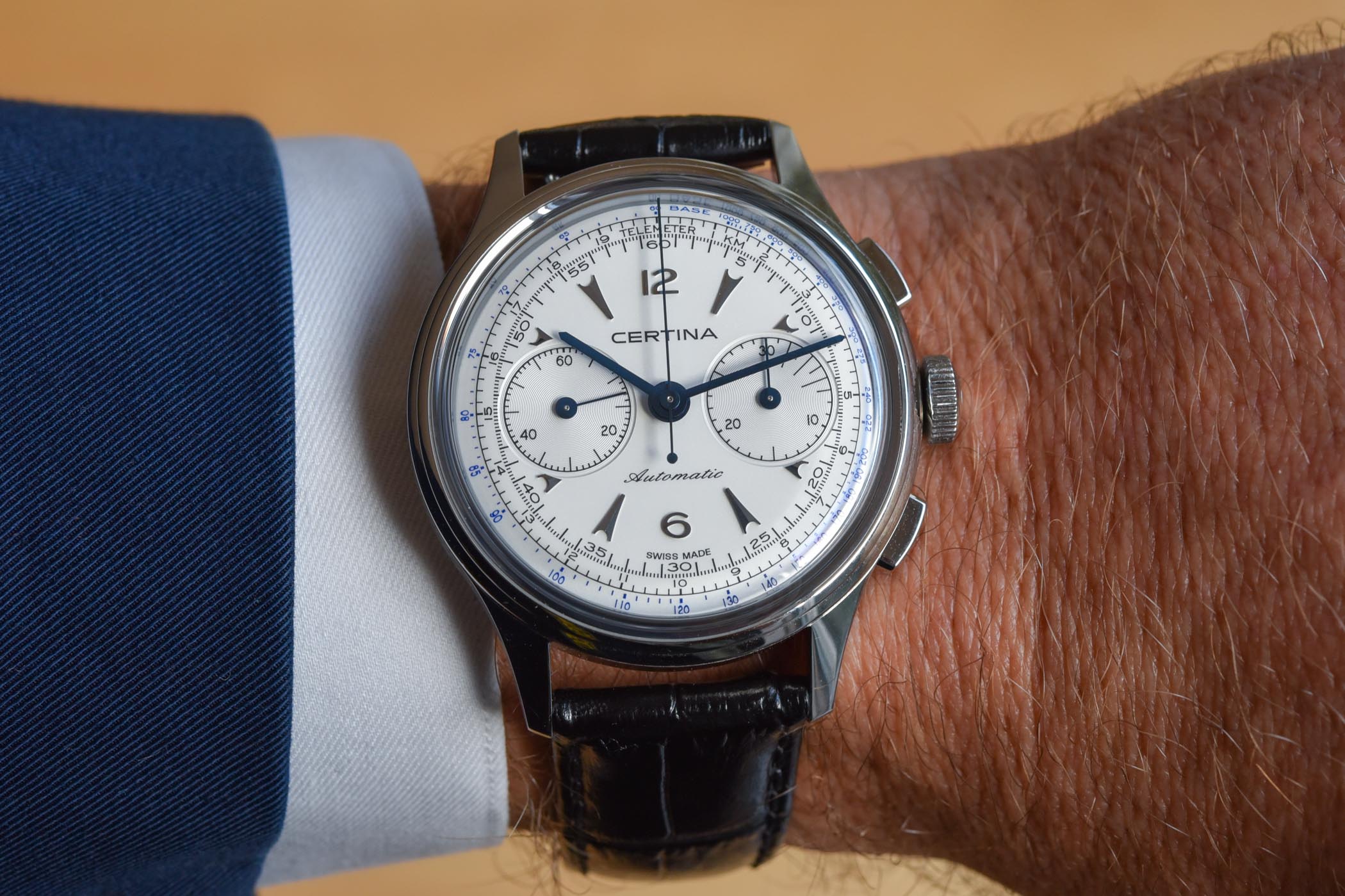
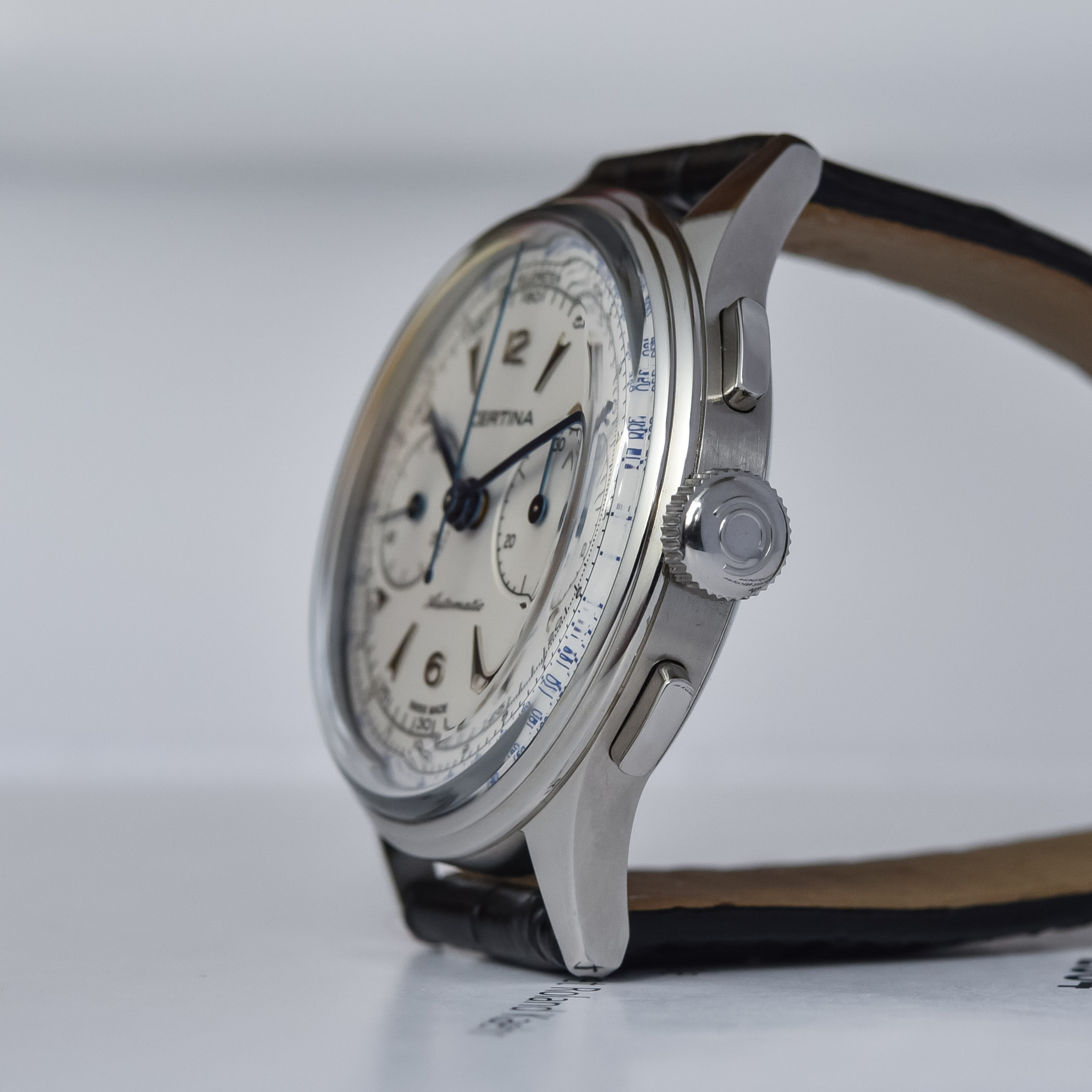
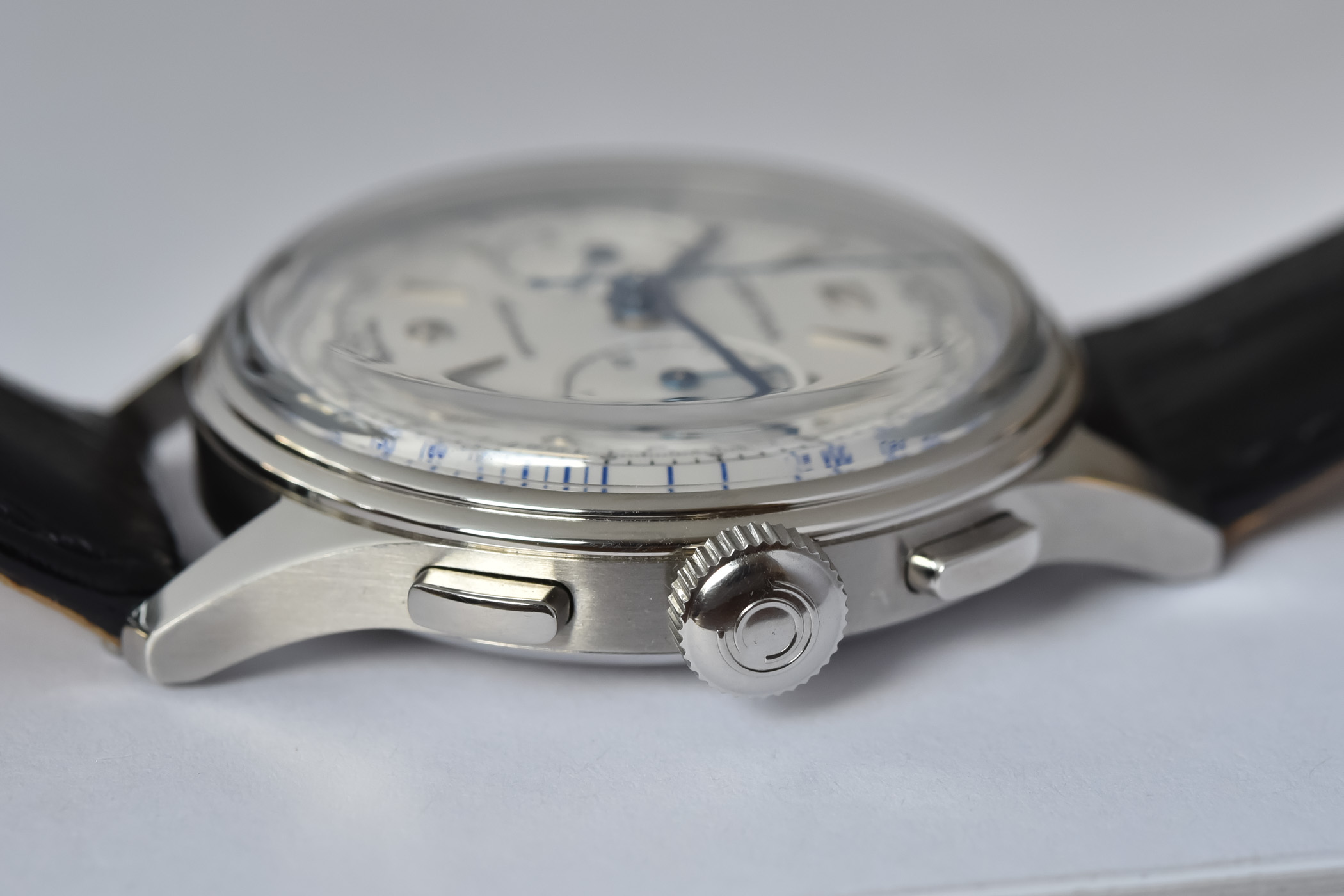
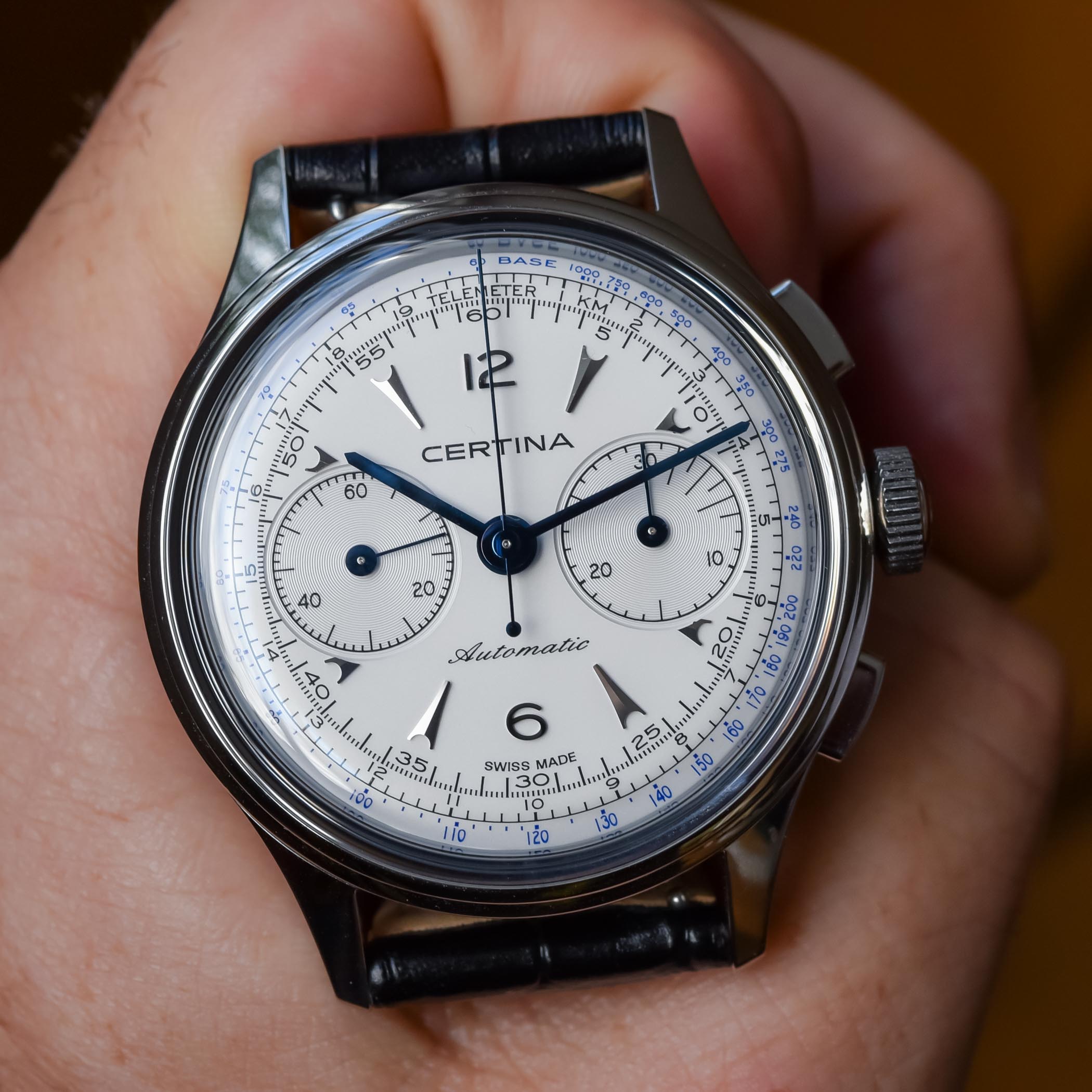

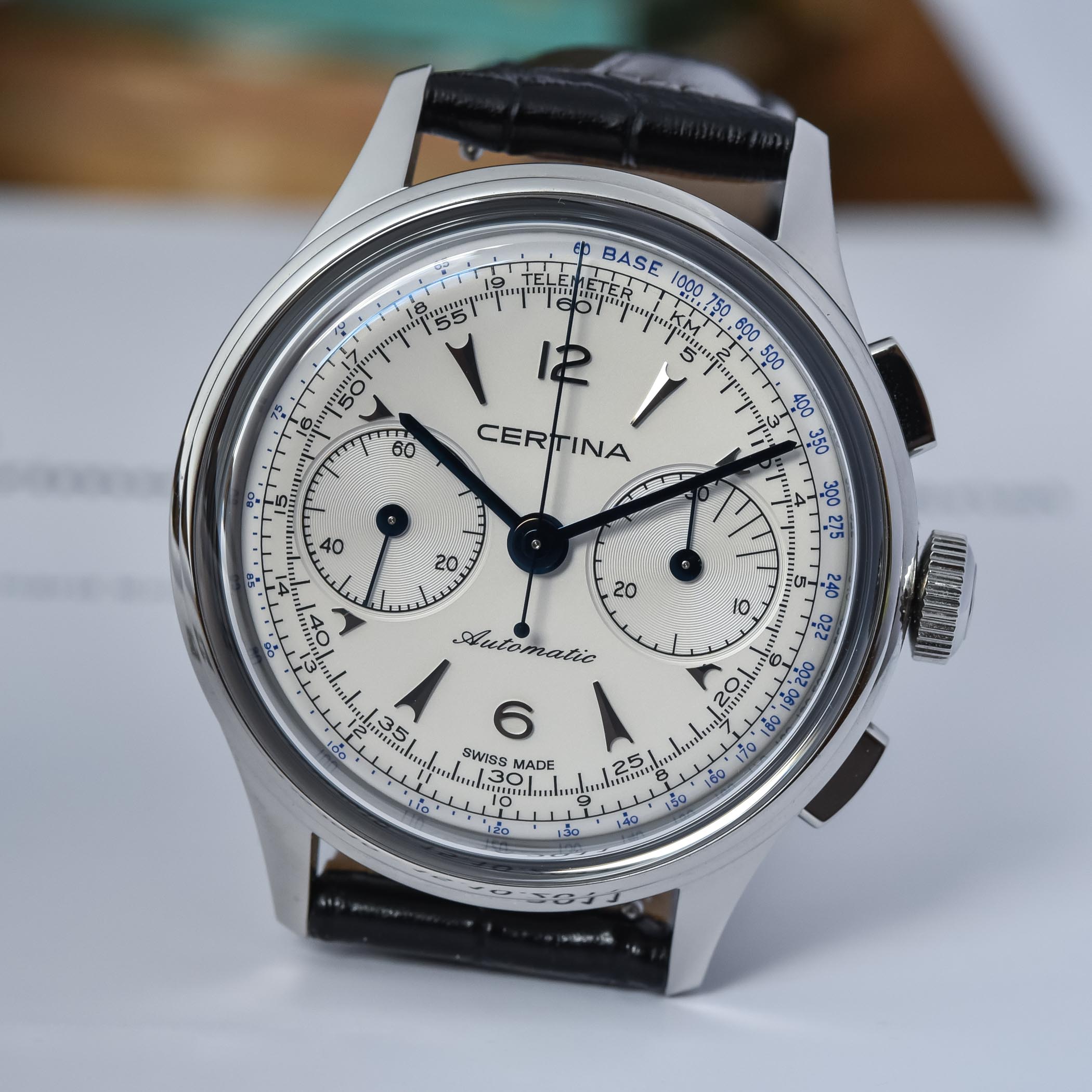

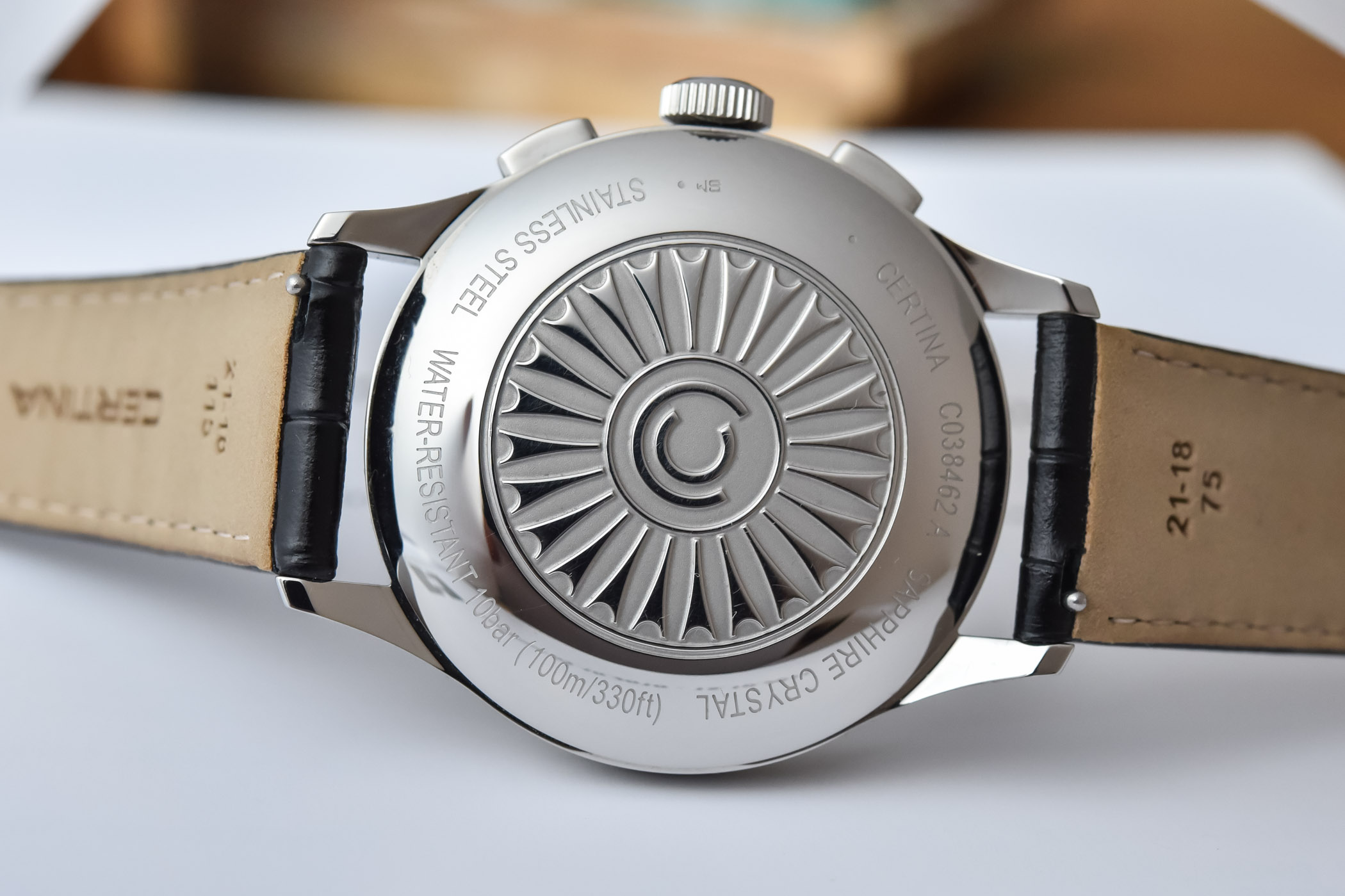




19 responses
Nice watch,reminds me of how on some watches it’s hard to tell if the bottom line is going to be 2k 5k 10k 20k etc till you read the price. This one might be close to a correct price.
Admittedly a handsome watch, although I few things bother (irritate) me. If it’s a “recreation” why enlarge it to 42mm and not stay at 38mm as many chromosomes were at the time? Marketing, I would guess.Also a telemeter scale is just about useless unless you live near an area with plentiful thunder & lightning storms. Personally I stay away from artillery. Can’t argue with the price.
Completely agree with Joel. 42mm and with ultra long lugs – it’s not retro nor vintage, it’s just unwearable.
Ergonomic lugs? Dynamic applied indexes? Otherwise, nice presentation.
Is the claim of the original watch being from the 1940s not a mistake? The dial on that supposedly „1940s” piece in the photo featured in the article looks pretty fake to me. No lume on hands, yet there is lume on the dial. That Certina font dates to the second half of the 1950s – what is it doing on a watch supposedly made a decade earlier?
The way I see it, this „protoplast” of the new watch is:
-A frankenwatch with a later (incorrect) service dial
-A redial
-The „1940s” claim is wrong through and through, and the watch is one of the Excelsior Park-powered pieces made in the late 1950s and early 1960s.
@mike – point taken. Contacting the brand on this.
It would be a big yes, with 38-39 mm dimension,,,In 42 is a big NO!
The recreation is more of an inspiration and as such valid for today’s market. A pity the scales are in metric, although maybe not so much as I don’t suppose anyone will ever use them
Phil, Europeans use metric system and don’t give a damn if americans don’t understand it.
Too big. Too bad. Otherwise very well done.
With this styling, at this price, I’d buy in a second if it were properly sized.
The sub dials on chronos under 40mm are a strain to see. So, the 42mm size works. Nice watch.
At 38mm it would have been virtually unsellable to all but small dial watch geeks (a small section of the market). For the general market, 42mm is a contemporary size that will have far more market appeal.
I don’t know why a European brand selling almost exclusively to mainland Europe and the near East would put “miles” on the telemeter dial. But it’s not that, the size is wrong for the design. 40mm would have been better. Not 42mm – people aren’t buying a watch of this style and want something big and bling. They buy this style because they want something 1950s looking.
@Leo, Ha ha ha. Small-watch geeks are the authority as said by some small-watch geeks. They are like Trump supporters of the watch world.
@mike – here’s the message (translated from French) that Certina sent us as we got their attention on your comment
Our product department has selected this piece from our museum as a basis for reproduction because it most closely embodies the original design of this model launched at the end of the 1940s. There have been different versions and variations, knowing that ‘it has been produced for many years.
The CERTINA brand was officially registered in 1939. There was a transition phase between Grana and CERTINA during the 1940s. The name Grana was finally abandoned in 1949. We also have in our “museum” collection a watch similar to the one presented with the Grana brand inscribed on the dial.
The dial of the initial model (late 1940s) has therefore also evolved over time and with variations. Dots of luminescent material were indeed added on top of the railtrack of our pictured piece, confirming that it was produced a few years after the initial model was launched. That’s why we didn’t put Super-LumiNova® on our reissue.
During this period, there was also a transition from the calligraphic logo to the printed logo (also included in our visual identity since 2013 to celebrate the 125 years of the brand).
As for the movement which equips the “museum” watch, it comes from the Jeanneret-Brehm manufacture in Saint-Imier, which produced this movement from the 1940s.
@Xavier Markl – Thanks for reaching out to the brand. Props to you for doing that, and to Certina for addressing the matter so quickly.
While Certina’s response feels somewhat circumventive (although that’s the standard for PR communiques, can’t blame them), it’s also very revealing on the key points. Unless I’m misinterpreting it (and I might, should anything have been lost in translation) they actually are saying that this is a later service replacement dial, correct for the model, albeit for a later iteration of it.
They could have as well said that the movement is an Excelsior Park (given the dial layout, an EP4), as Jeanneret-Brehm was tied to Racine (Gallet/Electa), and was the manufacturer of Excelsior stopwatch movements and Excelsior Park chronograph ones.
Mystery – solved, curiosity – satisfied. Thanks!
The watch in this size has great proportions. If the watch was 38-40mm, the height would be much more noticable. It wears very well and it’s execution is faultless. Another great vintage inspired piece from Certina!
Just discovered this article while researching Certina watches so no one will probably see this now. But here’s something no one has mentioned: For reasons I don’t understand, Certina kept the dial design true to the original and even used KM on the telemeter scale but then chose the American spelling of Telemeter and not the Telemetre that was on the original watch. Things like this really tick me off. Either keep it all original in its presentation or change everything including the scale (former would’ve been the correct choice).
And yes, the size is way too big for a vintage design. 40mm should’ve been the upper limit.